#Simon deserves to at least have had an outline of his origins man
Explore tagged Tumblr posts
Text
Jericho’s quite literally been his home for YEARS. It should’ve stirred up much more tension amongst the whole organization with his death with how much he cared for his people, hell they could’ve established and implied a bond between him and Josh since he was the one to even bring up his death if Markus decides to shoot him.
THIS THIS THIS ^^^
Honestly in my bones I feel like Josh and Simon had a deep connection/bond with one another and I so desperately wish that was explored when North and Markus come into the picture. Josh being angry about leaving Simon behind—fighting back against the decision and then having the reality that if Simon doesn’t make it back tension only mounts. I see Josh following Markus because Simon does and he trusts Simons decision—I’ve thought about it a lot and when it comes to Jericho being blown up and them at the church Josh and those who only follow Markus because of him and Simon— ‘Simon trusts you. So I’ll trust you.’ A play on how in the original game he’s ’we’ll follow you to the end Markus.’ I want problems in Jericho if you lose Simon man! He is the soul of Jericho and Cage/QD can pry that from my cold dead hands!
Especially also, with Markus discovering how Jericho was founded, the way some Deviants probably side heavily between Josh and North and will turn to Simon or Markus when it comes down to decisions. Now heavy decisions rest solely on Markus’ shoulders when before Simon would voice support or concerns if given the chance. The former leader backing him up cause Simons been at this FOR YEARS and Markus has only been awake for DAYS! 10/10 Simon should’ve played a more complex role in the story.
Simon repeating the cycle of death and (re)birth in giving his heart away I just— this guy I need his story. I’m firmly in the HC of him deviating out of love, so unlike the rest of his people. To me it’s a reason why he won’t talk about his life pre-deviancy but also why he’s so placating at times. He’s seen the love and good of humanity, he’s also known the bad of it and it’s a tightrope he walks with Markus if he makes it back to Jericho.
Simon being both metaphorically and the literal embodiment of a Sacrificial Lamb. Seeing himself as nothing but a failure of his people — viewing his own vessel as a farm for biocomponents to feed his comrades and provide their sustenance with his death like defeated prey. Made up himself of parts he’s salvaged and torn off others of his own kind in their final moments to keep himself going over the years, believing he’s joining the cycle by sharing the same fate of the ones he’s seen die in Jericho prior to Markus’ arrival.
His persistence in Markus tearing out his heart akin to a sheep forcing its exposed neck into the maws of a starving wolf; wishing it’d kill him to live on. Knowing a piece of him lives forever from within Markus’ chest, beating his heart for him to keep his companion alive even with Simon gone. Not caring he’s forgotten and lost in the chaos of war. Body but a limp plastic chassis with him gone.
Not even giving Markus a choice. Urging to just eat him and let him die already for the benefit of everyone. Simon valuing all life but his own.
God I love him as a character but please give that man some happiness. No wonder he’s so tired all the time, he’s probably worn down from all the shit he’s seen throughout the years in that rotting boat and just wants to go out being useful for once. Bro looks like he just wants a nap.
#also hc that since he’s like an iphone he’s probably got chronic fatigue due to barely operating after all these years#i just like the idea of simon undergoing aging and manufacturing eroding#totally not just an excuse to make him more sleep deprived and visibly tired than he already is w/ that fuckass grandpa jacket he has#simon being the soul of jericho is so real // could’ve been associated with its origin if cage wasn’t a coward#prev tags#don’t feel bad for tweaking rn it’s 5am and I’m right here with ya#Simon deserves to at least have had an outline of his origins man#like how he was probably close to the previous leader of Jericho and now he’s just fallen into the role for years now#ALSO YES YES TO HIM DEGRADING OVER TIME#he’s tired and old (in android and deviant terms)#give him some sweaters and a blanket and grandpa chair for his leg man#adding onto the leg HC you got it’s probably starts locking up in the winter!
78 notes
·
View notes
Note
What would be your DC Starter pack?
I’ve put together equivalent lists for Superman and Batman in the past (and in deference to that I’m leaving them off this list; take Superman: Birthright/All-Star Superman and Batman: Zero Year as what I’d put on here), but this is obviously an entirely different ballgame. DC is BIG, with all manner of different corners and subgenres to it - getting into it as a whole is a pretty substantial undertaking even for those who’re already fans of a handful of given characters. But as before, here’s a set of springboards - 15 this time instead of 10 given the scope of the undertaking - for getting a sense of how DC as a whole works, and what aspects of it you might want to pursue further, almost all of which should be available on Comixology or at a local comic book shop. Two caveats up front though:
* I’m sticking to titles that can claim at least some sort of tangential, secondhand connection to the ‘main’ universe, if even by the absolute slimmest of threads, so I’m not including the likes of Astro City, Transmetropolitan, Preacher, Ex Machina, etc., even though they’ve all been published by DC and absolutely deserve your attention.
* Since this is for prospective new readers, I’m with a singular exception sticking with comics from the mid-1980s or later.
1. The World’s Greatest Superheroes
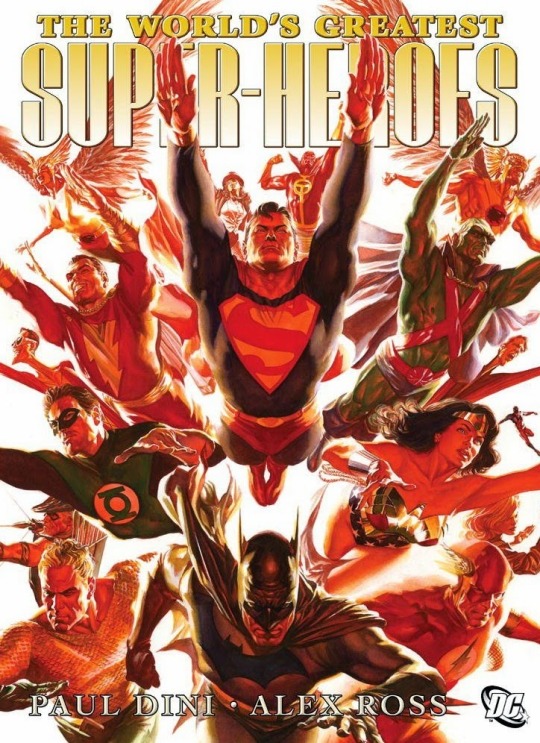
What it’s about: A group of six oversized all-ages comics by Paul Dini (critically involved with many of the DC family of cartoons, especially the beloved shared universe of shows extending from Batman: The Animated Series to Justice League Unlimited) and Alex Ross; four stories focusing on Superman, Batman, Wonder Woman, and Captain Marvel handling ‘real world’ issues, the Justice League trying to stop a very different kind of global threat than their usual supervillains, and a set of origins for most members of the classic Justice League of America.
Why you should read it: If you’re in the market for a one-stop shop of “what’s the deal with DC Comics?”, then this is as good as you’re gonna get. A set of introductory stories with their biggest icons by proven crowdpleasers, along with a set of storybook-esque explanations for a bunch of their other biggest heroes (at least among the ‘classic’ crowd) to boot.
Further recommendations if you liked it: This is more a “getting your feet wet” example than a direct gateway to other material (especially since most of the all-ages titles I’d suggest following up on this I mentioned in those Superman and Batman starter packs), but it’s notable that Captain Marvel plays such a prominent role in here given how scaled-back his presence has become over the years. He’s terrific when handled properly, and past his original 1940s comics, I’d recommend Shazam!: The Monster Society of Evil, The Multiversity: Thunderworld (while that’s part of a larger series this issue works perfectly well standalone), and Convergence: Shazam! (ditto).
2. DC: The New Frontier
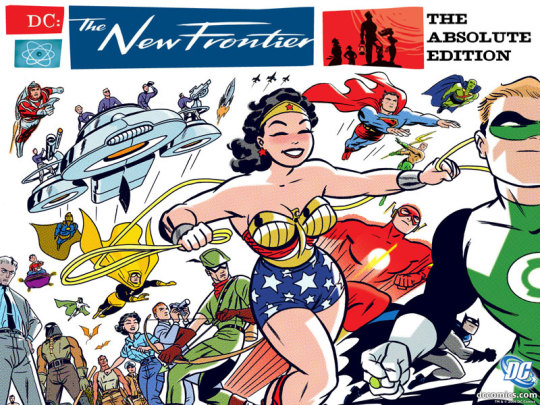
What: In the 1950s the age of heroes seems to have come to an end - most of the Justice Society of America retired following congressional inquiries, Superman and Wonder Woman have grudgingly aligned directly with the United States government so that they can continue operating somewhat unobstructed, and the Bat-Man has gone underground, while human champions such as the Challengers of the Unknown, the Blackhawks, Task Force X, and the Losers now carry the day. But with the dawning of a new era, the first stirrings of a new generation of extraordinary individuals, and the creeping emergence of a new threat, all of America’s heroes must unite to defend and shephard in its future if it is to have any future at all.
Why: A radically different origin for the Justice League set against the backdrop of McCarthy’s America and the beginnings of the space race, it’s largely considered to be the late Darwyn Cooke’s masterpiece, and one that perhaps more than any other story demonstrates the breadth and potential the larger universe offers. It’s a rugged, heartfelt, soaring story of our strive to reach farther and better ourselves in the face of a world that would fight back against that impulse, and one that draws on every corner of the world it’s set in to show old and new fans alike how it comes together as more than the sum of its parts when handled right.
Recommendations: Two of the three main heroes presented here - Flash, Martian Manhunter, and Green Lantern - have quite a stock of classic adventures of their own, which I made some recommendations from here and here (on top of those I’d recommend Tim Seeley’s tenure on Green Lanterns, which just began last week with issue #33). For the beginnings of the “superheroes dealing with Relevant Social Issues” strain of comics that this delves into, there’s the classic Green Lantern/Green Arrow run, which has aged awkwardly but was a seminal moment for DC, and established Green Arrow as he’s known today (who I understand has been doing well in his current Rebirth title under Ben Percy, if you want to pursue him further). And for large-scale DC sagas drawing from across the scope the universe and interrogating the place of superheroes within it, I have to mention Kingdom Come, Mark Waid and Alex Ross’s end-of-days vision for the latter-day Justice League and their world that proved one of the company’s most enduringly popular and influential books.
3. Wonder Woman: Year One
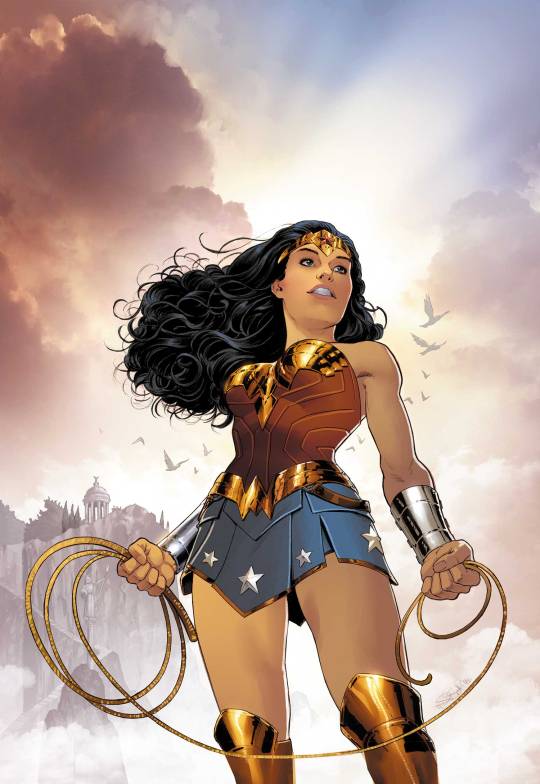
What: When pilot Steve Trevor crash-lands on the hidden island of Themyscira - a mythical paradise where immortal warrior women live in peace and prosperity under the protection of the Greek gods themselves - Diana, daughter of queen Hippolyta, volunteers to escort him back to Man’s World and serve as their ambassador knowing that she may never return. Finding her place in a strange new culture, discovering the depths of her power, and detecting the hand of the gods in mortal affairs, these are the first steps towards a girl fashioned from clay becoming Wonder Woman.
Why: You know who Superman and Batman are, so you should get a decent grasp on the other member of the ‘trinity’ that props up the rest of the universe too, and this is as fine a place to begin with Wonder Woman as it gets thanks to Greg Rucka’s fantastic handle on the character and Nicola Scott’s absolutely gorgeous, iconic artwork. It tells you everything you need to know and shows you everything you expect to see, and it does the best job of it that anyone yet has.
Recommendations: For another take on Diana’s early days and adventures I can’t recommend enough The Legend of Wonder Woman, a recent all-ages take on her origin set in World War II that brings more depth to Paradise Island itself than I’ve seen elsewhere and serves as an at least equally fine introduction; I chose Year One since it’s both contemporary and the current ‘official’ origin. The rest of Greg Rucka’s run here is fine, but a lot of it is essentially cleaning up the larger mythology since Wonder Woman’s background and world had undergone some major revisions in prior years; his original run is what I’d recommend, essentially him handling her as a political drama. Aside from those two, Gail Simone’s run on the character is I believe easily the most universally-beloved modern take on her, and what I’ve read absolutely lives up to that. I do also have to mention her original 1940s adventures, which were bizarrely playful and politically unusual in a way that little else with her has been since. Steve Orlando’s work with her, while segmented, is also among her best.
4. History of the DC Universe
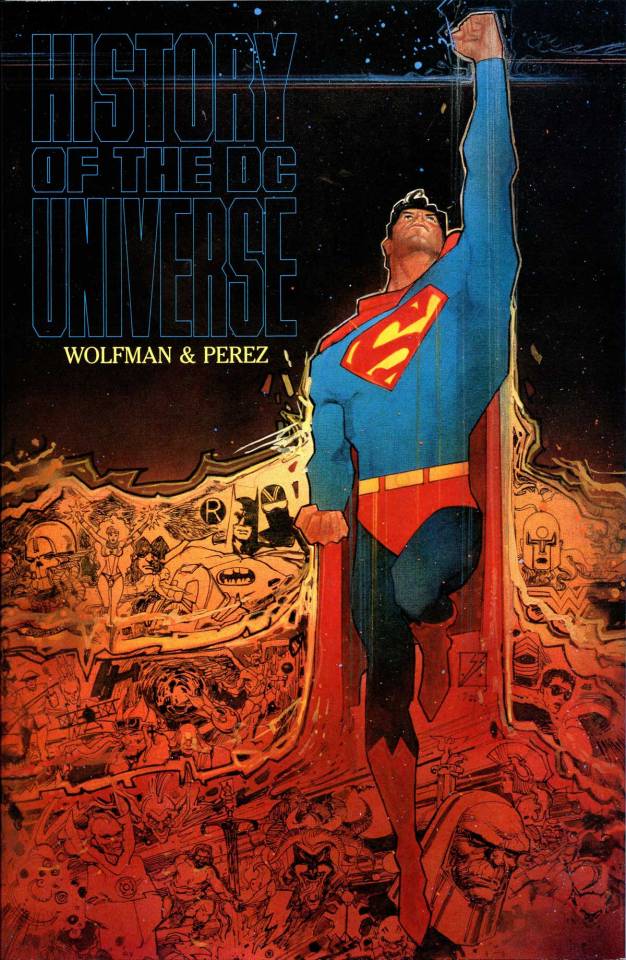
What: A recording by the woman Harbinger, one of the only survivors of a cosmic crisis that shredded and reassembled reality to recall the full extent of what was lost, detailing the ‘new’ history of humanity from the dawn of civilization to the end of time.
Why: I don’t want to make too many concessions with this list to what’s ‘important’ over what’s good, and large chunks of this are long since out of date anyway. But in terms of getting a sense of the world as a whole, having a basic outline of what’s a big deal and what happened when certainly helps.
Recommendations: If you want more that can give you a sense of the history of the larger world, I’d recommend Flash of Two Worlds! as the introduction of the multiverse, Crisis on Infinite Earths as the (temporary) dissolution of that multiverse and a truly major event that’s still being referred back to, The Multiversity Guidebook which - in spite of some connections back to the main story that’ll only make so much sense without reading the rest of it - outlines the history and current cosmological setup of that multiverse (though even that’s since been upheaved with the official reintroduction of an infinite multiverse around the ‘core’ 52 universes, even if it hasn’t been taking center stage), and DC Rebirth, which sets up and foreshadows most of the big stories happening right now. I’d also suggest trying Supreme: Blue Rose, a pseudo-sequel to Alan Moore’s classic run on Supreme (a book that under his direction was essentially one long riff on DC Comics and Superman in particular) which takes a much heavier and stranger look at a new version of that world from a ground-level perspective, telling the story of what it feels like to live in a universe constantly subject to reboots and revisions in the way DC is.
5. JLA
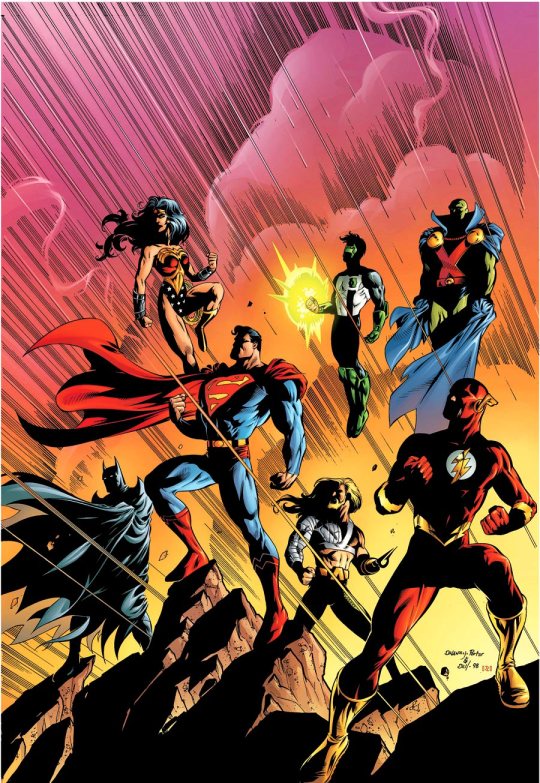
What: The return to an iconic Justice League lineup under Grant Morrison after years of second and third-stringers, this run pits them against some of the wildest, weirdest, and most definitely BIGGEST threats of their considerable careers, from a new Injustice Gang and Solaris the Tyrant Sun to renegade angels and warring higher-dimensional colors.
Why: The template for 21st century Big Action Superhero Comics, defined by excellent characterization and incredible setpieces, it’s the premiere example DC’s big guns working together alongside allies from across the universe against the worst the universe has to throw out them. A lot of what defines modern DC’s approach to how these characters are supposed to work together and what constitutes a threat to their entire universe traces directly back to here.
Recommendations: In the immediate aftermath of Grant Morrison’s run, Kingdom Come writer (and already part-time fill-in writer on the book) Mark Waid took over with existing artist Howard Porter and The Authority big gun Bryan Hitch, in a run that’s similarly worth your time and in many ways just as influential for its first story, Tower of Babel; you can and probably should collect both runs across JLA Deluxe Edition Volumes 1-6. Speaking of The Authority, both Warren Ellis/Bryan Hitch and Mark Millar/Frank Quitely’s original runs on the team represent the refinement of the widescreen formula JLA pioneered to a brutal science, and Steve Orlando’s handling of series breakout star Midnighter in his own title set in the DCU proper - along with the followup mini Midnighter and Apollo - pushed it even further. Orlando’s gone on to write JLA himself, starring an eclectic lineup led by Batman trying to hang in there against the kind of cosmic horrors the classic model fought back against, and that’s definitely worth your time, as are numerous arcs of JLA Classified (particularly Morrison’s opening that acted as a prequel to his book Seven Soldiers of Victory, Warren Ellis and Jackson Guice’s New Maps of Hell, and Gail Simone and Jose Luis Garcia Lopez’s The Hypothetical Woman). Meanwhile, Christopher Priest and Pete Woods took the Authority’s influence on the team in an entirely different direction with a brief, clever, politically-flavored run. On top of those, I’d suggest Aztek, a short-lived series by Morrison and Millar around the same time as the original JLA that ultimately figured into it, and Geoff Johns and Mike McKone’s Teen Titans, which mixes the broad strokes of the approach with the requisite teen soap opera and yields probably the best take on that group outside the mid-2000s cartoon. Most substantially however is Scott Snyder’s extended Justice League run (with a number of recurring partners, primarily cowriter James Tynion and main artist Jorge Jimenez) spinning out of his Dark Knights: Metal event comic with Greg Capullo, a gleefully sincere supercharged jolt of color to the DCU that takes the best of Morrison’s approach and runs in a completely different direction with it.
6. Tom Strong
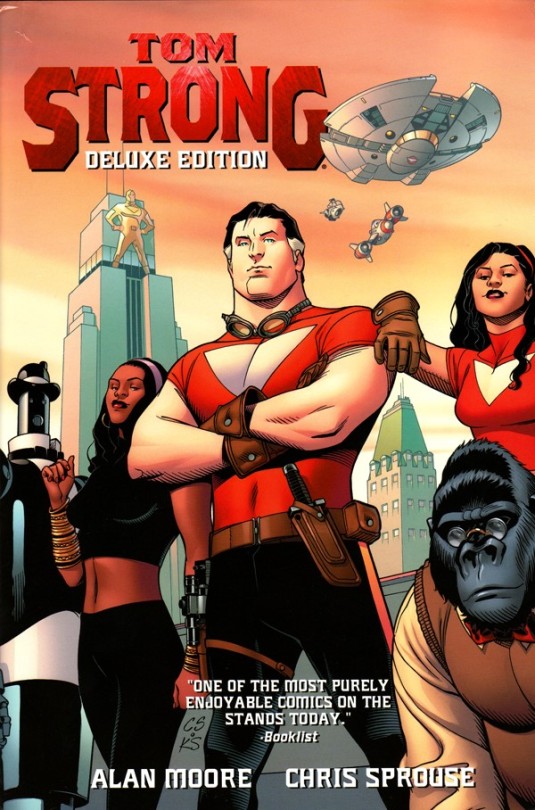
What: Born at the turn of the 20th century on the island of Attabar Teru to a pair of scientists and raised in a gravity chamber, the stories’ titular hero was freed in an earthquake that killed his parents and raised by the natives - journeying at 21 to Millennium City to learn of the legacy his parents left for him, he found himself a “science-hero” to the beleaguered metropolis. Now at the dawn of the 21st century, kept in his prime by the mythical goloka root alongside his wife Dhaula, they, their daughter Tesla, steam-powered servant Pneuman, and talking gorilla Solomon still use their wits and skills to defend their home in Millennium, and unknown realms far beyond.
Why: With the recent announcement of the Strong families’ integration into the DCU in some fashion it’s likely these comics are going to be reprinted, and that’s a darn good thing - as far as I’m concerned, they’re the platonic ideal of classic-flavored superhero books. Fun, funny, adventurous and warm-hearted, while it wasn’t intended as part of DC it represents its arguable baseline tone and approach as well as any comic ever has; if this ends up doing it for you, it’s likely to be a gateway to plenty more.
Recommendations: If Tom Strong does it for you, then that’s really a sign that you might be up for older DC titles in general; I made suggestions in that regard for Superman and Batman in their respective starter packs, but I’m also especially inclined to mention the likes of Metamorpho and Legion of Superheroes, alongside other titles you can pick up in DC’s inexpensive black-and-white Showcase Presents reprints (a list of which you can read here). For something more modern with a similar tone, I’d suggest Mark Waid’s 12-issue run on The Brave and the Bold with George Perez and Jerry Ordway, and for more period-piece style heroics with heart, try the currently ongoing DC Bombshells (currently running as Bombshells United).
7. Solo
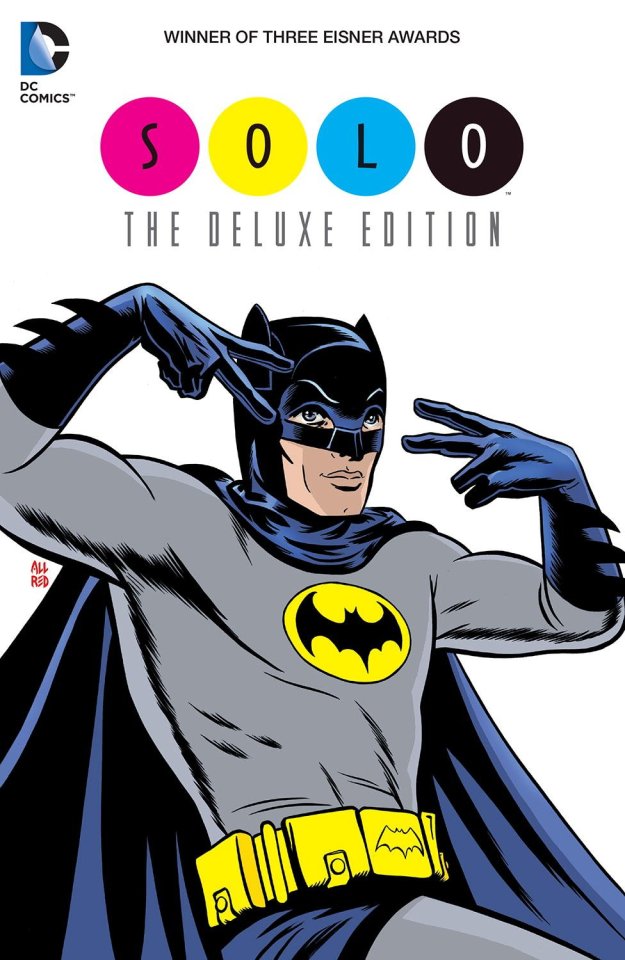
What: A 12-issue anthology, each stars a beloved artist with whichever collaborators they wish doing whatever they please, the only restriction being that at least one story must involve some permutation of some version of a DC character.
Why: I recommended Tom Strong as representative of the baseline for how DC Comics generally aspires to work; this represents the farthest possible afield territory from said baseline. Treating DC’s biggest names as broad iconographic tools to be shaped and reshaped at a given creators’ whim for the sake of their stories, this is DC as indie comics, and it’s a valuable perspective.
Recommendations: Along with Batman: Black and White, DC’s other big project in this vein was Wednesday Comics, a 12-part set of 15 running stories presented one massive page at a time in the oversized format of Sunday newspaper comics; some of them indisputably stink, but for every one of them there’s at least one fun title and one borderline-masterpiece, and nearly all of them are at least interesting. Another title significantly varying in style and content was Tomorrow Stories, from America’s Best Comics along with Tom Strong and operating in a completely different mode with each story, whether the Eisner-flavored Greyshirt or the Kurtzman-esque shenanigans of First American. And if Solo’s anarchic spirit and artistic variety appeal, I’d also have to give a shout-out to World’s Funnest, where a feud between goofball super-imps Mr. Mxyzptlk and Bat-Mite reaches multiversally catastrophic proportions.
8. Watchmen

What: Set in a 1985 that has significantly diverged from our own - first in the 1930s and 40s with the emergence of costumed crimefighters inspired by comic book heroes, and much more radically in the 1960s with the creation of the world’s one superhuman, the near-omnipotent Doctor Manhattan, who has spent the last two decades changing the technological landscape and securing American interests even as his mind grows more and more detached from any human perspective - Edward Blake is murdered. An investigation by the unhinged vigilante Rorschach uncovers that Blake was the Comedian, one of the only ‘superheroes’ to join with the government rather than be driven into retirement or forced to operate outside the law, and the detective becomes convinced that this is sign of a larger plot against the former costumed community. As the terrible secrets of the one-time crimefighters are unearthed, the question becomes not whether Rorschach is correct or as demented as his one-time comrades believe, but if it matters in the face of a Cold War escalated by Manhattan’s presence into the very real possibility of a nuclear apocalypse.
Why: Reading superhero comics at this point means reckoning with Watchmenone way or another: realistically speaking, if you’re reading this you’ve probably either already read it, already intend to get around to it, or have actively chosen not to. As a meticulous artistic construction it’s the standard by which all other modern comics are measured; as an interrogation of the genre its influence is for better or worse incalculable across the breadth of popular culture as a whole. Even minus the upcoming efforts to somehow merge these characters into the larger structure, there is no comprehensively understanding DC Comics in 2017 or beyond without reading Watchmen.
Recommendations: The most obvious suggestion - if also by far the most questionable one - is the upcoming Doomsday Clock, the thoroughly unexpected sequel where Doctor Manhattan and likely other figures from this world are revealed as having interacted and tampered with the ‘main’ DC universe, leading to some form of confrontation between Manhattan and Superman and their radically different cosmic viewpoints and representations of the moral nature of the superhero. As far as the structure and ambitions of the comic itself go, you’d likely be better served looking into the likes of Omega Men by Tom King and Barnaby Bagenda (another grimly political and acclaimed superhero comic operating on the unifying structure of the nine-panel grid), Top 10 by Moore and Gene Ha (another ABC title, this one a police procedural in a city where everyone in a superhero, it’s another 12-issue attempt by Moore at showing how superheroes would ‘really’ be using many of the same artistic tricks, but on an altogether wilder and more overtly optimistic wavelength), Miracleman (not a DC title but a book by Moore based on DC characters, and his other seminal superhero ‘deconstruction’ alongside Watchmen of the 1980s), and The Multiversity: Pax Americana (another standalone Multiversity issue, this one stars the Charlton Comics characters that inspired Watchmen’s leads and pushes its concerns and structural tricks even further in a time-bending overview of one man’s life and death that attempts to deconstruct superhero deconstructions themselves). And while not published by DC, Peter Cannon: Thunderbolt was once one of theirs and the inspiration for Ozymandias, and Kieron Gillen and Caspar Wijngaard’s 5-issue series with him is easily one of the best, most fascinating responses to Watchmen of all time.
9. Planetary
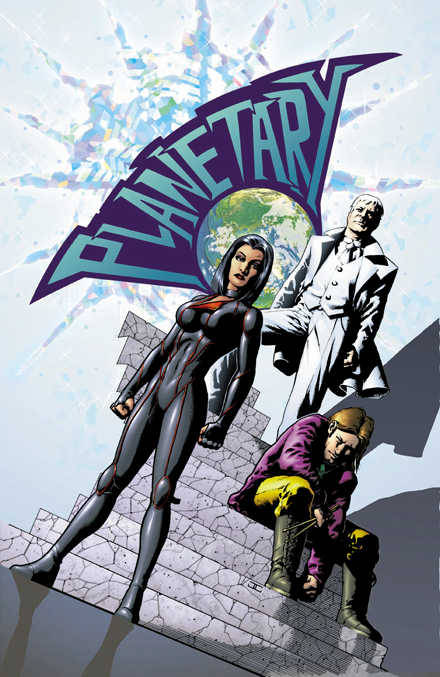
EDIT: This list was written prior to allegations made against Warren Ellis. It’s your money, but while I’d still recommend checking the book out of the library - the quality of the work isn’t going to change now that it’s out there in the universe - if you’re looking to pad your bookshelf I might recommend Al Ewing’s El Sombra trilogy in its place.
What: Elijah Snow has spent over a century bearing witness to the world’s hidden wonders and horrors, and now that he’s been recruited by the mysterious Planetary organization he has a chance to make use of that experience. Alongside the invincibly powerful Jakita Wagner and the eccentric technopath The Drummer, they are “mystery archaeologists”, investigating beneath the grim, ‘realistic’ superhero surface of the Wildstorm universe to uncover the buried, wondrous mysteries hiding in its corners, from Kaiju graveyards to lost underground city-ships from beyond the cosmic fields we know. As well as hunting the greatest mystery of all: the force that has conspired to keep these miracles a secret.
Why: Essential to an appreciation of a superhero universe is a well-developed sense of wonder: Planetary built itself on distilling artifacts of 19th and 20th century pop culture (typically by proxy) down to their most essential ideas and iconic values as mysteries to be unveiled, whether 1920s pulp heroes, Godzilla, Sherlock Holmes, 80s and 90s Vertigo comics, James Bond, John Woo revenge flicks, or any of a dozen others, so as to best allow them to be appreciated in that regard. It’s a celebration and reinvigoration of the base genre components that have made up American comics for lifetimes, an articulation of an approach that merges the intimate and grungy with the cosmically fantastic, and a masterwork of one-shot comics storytelling.
Recommendations: The immediate things that come to mind are, well, other Wildstorm comics by Warren Ellis, specifically his original run on Stormwatch where he turned a generic edgy ‘realistic’ superhero black-ops book into a bizarre political sci-fi adventure series with a bloody black wounded heart that later became the far more popular The Authority, and his fascinating relaunch of the universe line in The Wild Storm and assorted titles under the imprint of the same name; I also have to recommend by reputation Ed Brubaker and Sean Phillips’ Wildstorm crime comic Sleeper. Also, there’s Wildcats 3.0, which similarly converts a formerly achingly 90s title into a corporate drama as a gaggle of superhumans deal with the obstacles in attempting to provide a boundless energy source.
10. JLA/Avengers
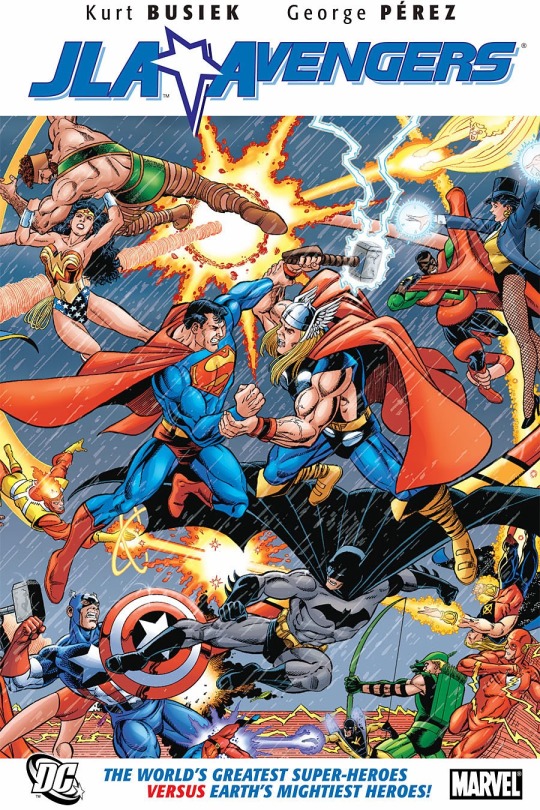
What: When the manipulative Grandmaster and the amoral cosmic seeker Krona decide to settle their titanic dispute via proxy, the greatest superheroes of two worlds find themselves pitted against one another in a conflict that leaves each of their realities’ at stake.
Why: There’s little better way to understand something than through contrast, and that at its core what JLA/Avengers is about: enmeshed within a fantastically written and drawn fanpleasing crossover adventure, easily the best of its kind, is a story on just what it is that separates the worlds of Marvel and its distinguished competition on a basic conceptual level, and how they overcome those barriers just once in the face of an unthinkable threat. Above any other comic, this defines what it is that separates DC superheroes from the rest.
Recommendations: For another exercise in contrast, Jonathan Hickman’s massive Avengers saga critically involves a crossover of its own with DC, at least in spirit, with the volume New Avengers: Perfect World. As the Illuminati (a gathering of many of the Marvel universe’s top minds alongside preeminent experts and political leaders) attempt to rout the threat of the Incursions, destructive collisions between parallel universes that can seemingly only be averted with the prior annihilation of one universes’ Earth, they discover another reality home to a far more morally forthright group of heroes known as the Great Society whose powers match their convictions, and who thus far have saved their world without compromise. But when the Society and the Illuminati find themselves in opposition, will their ideals win out? And if not, what is to become of the Illuminati when they make a choice no man can live with?
11. Jack Kirby’s Fourth World
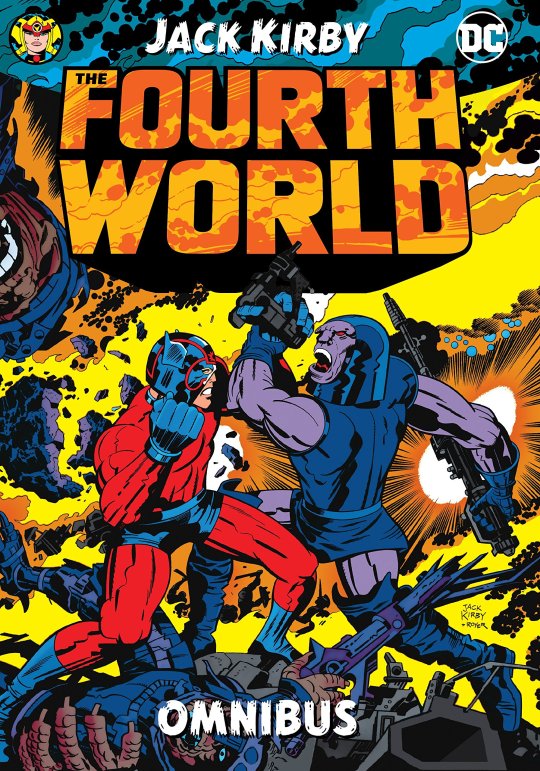
What: On numerous fronts across the cosmos, a secret war rages - with Jimmy Olsen and Superman investigating the Wild Area alongside the Newsboy Legion, with a group of bizarre teenagers landing on Earth, with a mysterious young man taking up the mantle of the fallen world’s greatest escape artist Mister Miracle, and with the mighty space god Orion arriving on our planet with a mission of direst import. For when the Old Gods died their world was torn asunder into the warring planets of New Genesis and Apokolips, and as the ultimate tyrant Darkseid seeks the utter domination offered by the Anti-Life Equation, the New Gods’ gaze turns to the Earth…
Why: The king of comics’ Jack Kirby’s unfinished masterpiece, the Fourth World Saga - soon to be recollected in a single titanic omnibus as several of the concepts make it into the upcoming Justice League - spans from the slums of Metropolis to universe-shattering wars in epochs long since past. It’s a treatise on youth and free will that’s perhaps the most purely ambitious DC publication of all time in its attempt to create a new myth for our times, and one of the only superhero stories to truly deserve the title of epic in the classical sense. I’ve only had a chance to read a fraction of it myself as of yet, but from that fraction it’s clear it not only has the combined brains and energy of nearly any dozen modern comics, but was and remains one of the most powerful testaments to the potential of the genre ever put to paper. And Superman and Jimmy Olsen fight a planet of horror movie monsters in it so evil it grew devil horns, so you really have no excuse not to take the plunge.
Recommendations: The King contributed plenty of concepts to DC such as the Challengers of the Unknown, the Boy Commandos, and an incarnation of Sandman; most promising if you’re sucked into his Fourth World material would be his other 1970s DC books, The Demon (where the immortal Jason Blood’s spirit is caught in an eternal tug-of-war with the dread Etrigan), OMAC (where Buddy Blank is forcibly conscripted to become the One Man Army Corps and stop the threats of tomorrow from becoming wars that would end the world, by way of punching like seven dudes at once), and Kamandi (where the last boy on Earth struggles to survive a post-apocalyptic wasteland where mutated anthropomorphic animals have long since come to reign supreme). The Fourth World itself has been followed up by numerous creators, usually weakly as they attempt to warp the characters to fit more traditional superheroic archetypes; some exceptions that fit with the King’s vision and ambition include several works by Grant Morrison mentioned above and below, (by what I’ve heard of its reputation) Walter Simonson’s Orion, and the current Mister Miracle by Tom King and Mitch Gerads.
12. Books of Magic
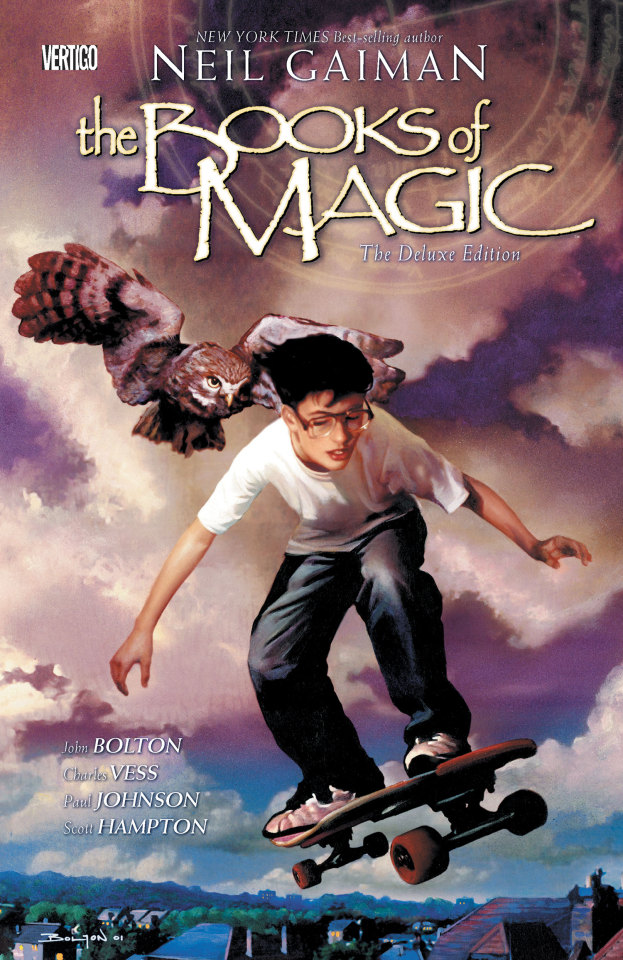
What: Twelve-year-old Timothy Hunter is met by the ‘trenchcoat brigade’ of the Phantom Stranger, Mister E, Doctor Occult, and John Constantine, with an unbelievable prophecy: that he has the potential to become the greatest sorcerer of all time. Taken on a tour over twelve issues of the magical side of the DC universe, Tim will ultimately have to decide whether to turn away from his potential destiny and live a normal life, or accept it knowing the horror of the price that always comes with magic.
Why: A small, self-contained story by the pretty dang beloved Neil Gaiman starring an archetype that many should find themselves familiar with (while Hunter preceded him by a few years and both Gaiman and Rowling have denied any inspiration, many have noted his undeniable similarities to Harry Potter), it’s not exactly the meatiest story, but it serves perfectly for its intended purpose as an introduction to the magical side of the DC universe. If you enjoy this - even if you don’t but could imagine the same tone, aesthetics, and general approach yielding interesting results under a different premise or creators - it may well open the doors to an entirely new set of fantastic comics for you.
Recommendations: Books of Magic is a single branch on a mighty tree of magical DCU books inspired by and connected to one another, appropriately beginning with Alan Moore’s transformative run on Swamp Thing, which itself introduced John Constantine who would go on to a great deal of acclaim in his own title Hellblazer. Swamp Thing in turn beget the titanically popular and influential Sandman, which had its own phenomenal spinoff title in the form of Lucifer. Books of Magic continued as well under different creators, and while only now tangentially connected to DC via Tom Strong, Moore and JH Williams III’s book Promethea is brilliant and very much of the same breed.
13. Flash & Green Lantern: The Brave and the Bold
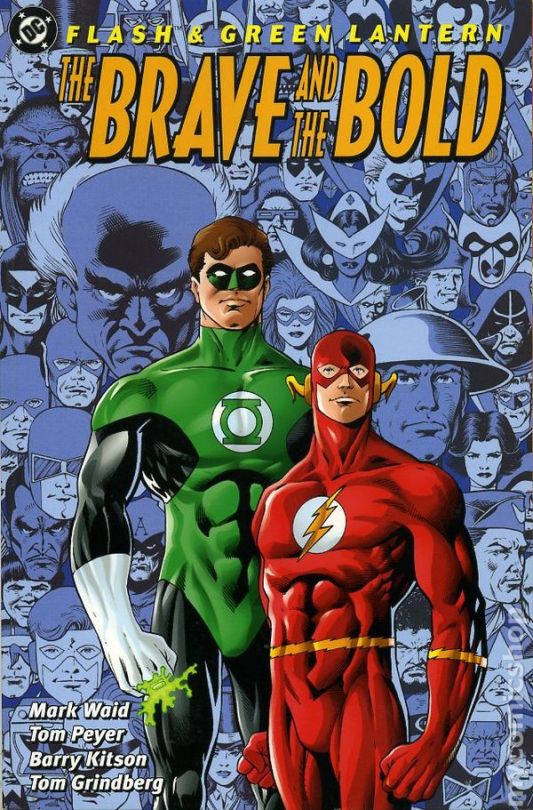
What: In the years leading up to their deaths (and subsequent resurrections, though they weren’t in effect at the time this story was written), Barry Allen and Hal Jordan were friends through thick and thin. Here, from their early days in the JLA to their twilights, these are six stories showing how that friendship changed and endured over the course of their careers.
Why: Two big things come with big superhero universes: histories, and the relationships that come with them. Both can go wrong, whether in the form of purely continuity-driven comics or soap opera titles driven entirely by the old faithful, but when creators handle them properly they’re an essential part of the magic of the shared world, and few comics are better examples of how to do it right than this.
Recommendations: For starters, this mini is itself a sequel of sorts to JLA: Year One, an origin for the team that while no longer their official history is regardless an excellent character-driven Justice League story. For the culmination of preexisting history being used as a tool for great storytelling, you’re in the market for Starman, extrapolating a D-list superhero lineage into a century-spanning family odyssey (and if you enjoy it, you’ll want to check out James Robinson’s book Golden Age, showing the retirement of the Justice Society in what many consider their definitive story). And Brave and the Bold is in many ways the final gasp of an era of phenomenal 80s and 90s character-driven DC titles, including (both from personal experience and shining reputation) the likes of Hitman, Hourman, Justice League International, John Ostrander’s Suicide Squad, and Chase.
14. Seven Soldiers of Victory
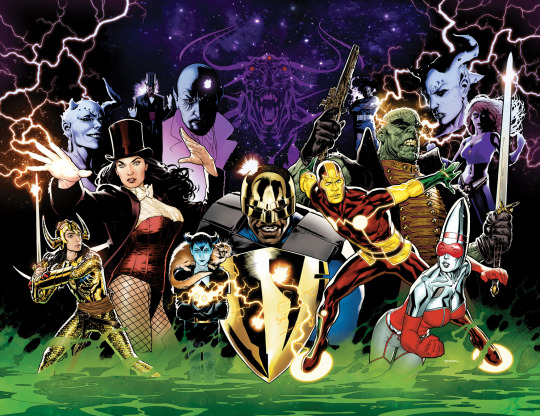
What: A set of seven interconnected miniseries plus bookends, this is the story of seven minor superheroes forced to band together and punch far, far above their weight in the face of a cosmic apocalypse that only they by prophecy can stop. And the catch on top of it? None of them know they’re on a team. Or even meet each other.
Why: Seven Soldiers is a tour-de-force in just about every regard, but even beyond its incredible quality, it just as importantly serves to teach the final, most important lesson of all when it comes to the DCU: there are times it gets buck wild. Superhero worlds are crazy as hell, and to a certain extent you’re going to have to not just accept that on the journey to loving them, but embrace them. And nothing’s going to help you learn that better than a crimefighting newspaper mascot unwittingly working alongside the likes of Frankenstein and the god of escape artists to save the world from evil fairies.
Recommendations: Past the 1970s and truly weird superhero stuff falling out of fashion, Grant Morrison’s the master of this kind of bonkers material - alongside material by him I’ve mentioned before and in the final recommendation, I particularly have to bring up Final Crisis, the event-comic sequel to Seven Soldiers and his JLA that brings his incredible, bizarre vision of the DCU onto the largest scale possible. That itself spins out into the incredible Multiversity, and the aforementioned Scott Snyder/Greg Capullo DC event book (overseen to some extent by Morrison) Dark Nights: Metal; if you want to check out the latter I’d suggest Return of Bruce Wayne, another Morrison-written Final Crisis spinoff that ends up planting some very important seeds even outside the context of his larger Batman run.
15. Flex Mentallo: Man of Muscle Mystery
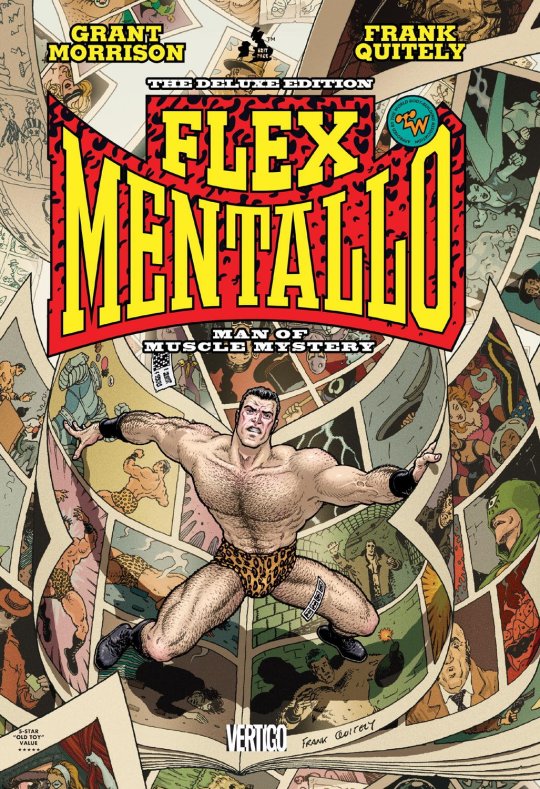
What: Gifted with the superpower of being able to do anything by flexing his muscles and posing dramatically (with the incredible mental discipline of muscle mystery!), Flex Mentallo was brought to life by a the dying wish of young boy Wally Sage into the real world - albeit a ‘real world’ far stranger than any we might know - but faced with apocalyptic cynicism and a seeming message from an old ally in his fictional days, Flex finds himself on an odyssey to find where all the superheroes have gone and how to save the world the way they used to. Meanwhile, punk rocker Wally Sage is ODing in an alley and babbling away on a suicide hotline about the comics he loved as a child…most of all his own creation, Flex Mentallo.
Why: Grant Morrison’s ultimate statement on superheroes and the potential they hold in our own lives, Flex Mentallo is perhaps the most important comic of all on this list, because while the rest of the recommendations illustrate aspects of the history or genre possibilities or characters that will make you fall in love with the world of DC, Flex is the definitive text on Why This Superhero Comics Shit Actually Matters.
Recommendations: Well, most of Morrison’s other DC work, which I’ve suggested plenty of above alongside his Superman and Batman material in their respective starter packs; the big two I haven’t brought up are his run on Doom Patrol, the headtrip freako comic that introduced Flex in the first place, and Animal Man, his first DC book and alongside Flex his most foundational. If you enjoy Flex you might also be the market for more of DC’s odder Vertigo output meshing the superheroic with the supernatural and horrific; much of its best material was under the Books of Magic entry, and it’s not a field I’m that acquainted with, but I’d also recommend the volumes of Doom Patrol, Shade the Changing Girl, and Eternity Girl under DC’s Young Animal imprint, which carried on the tradition once Vertigo mostly switched to creator-owned work prior to its shutdown.
455 notes
·
View notes